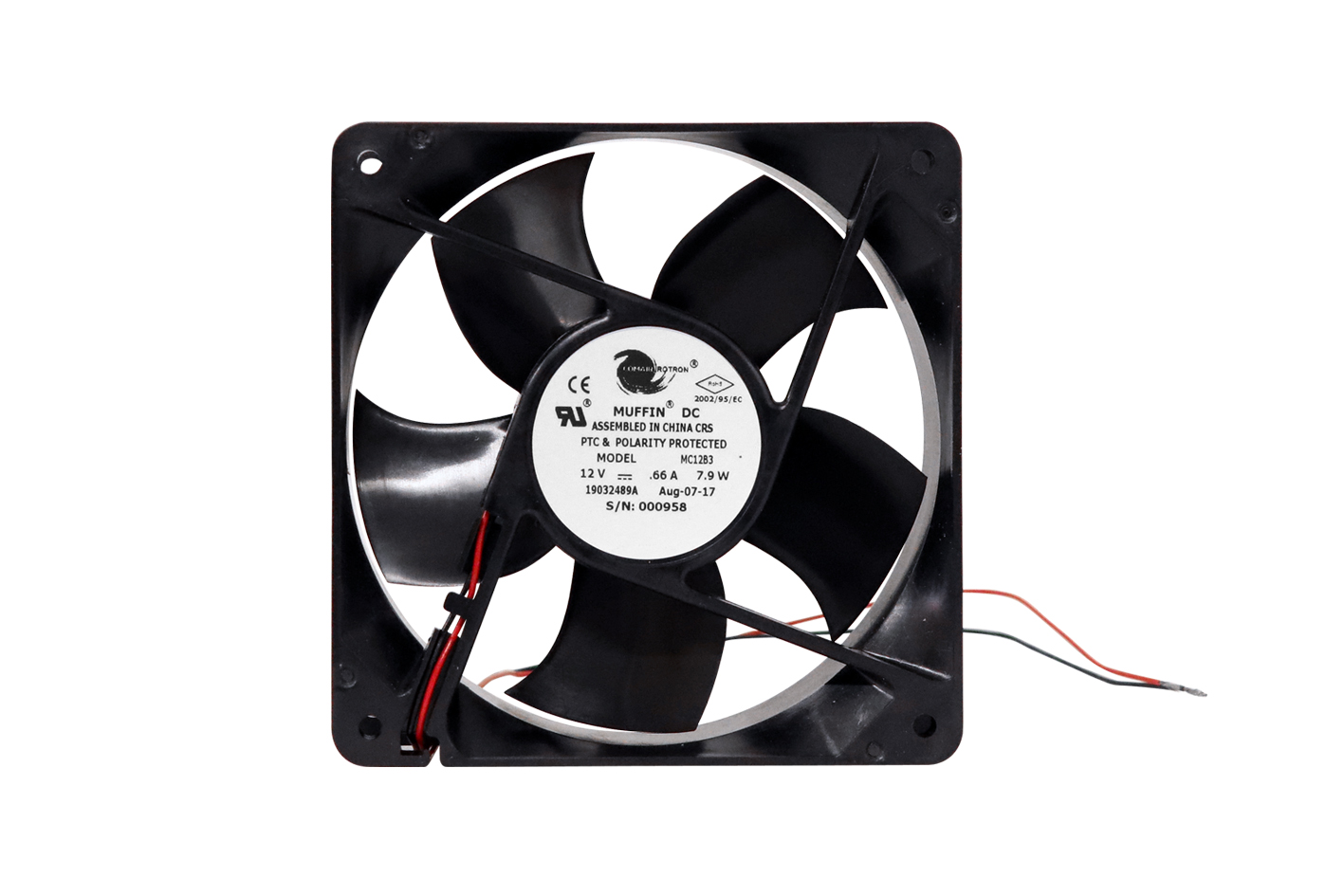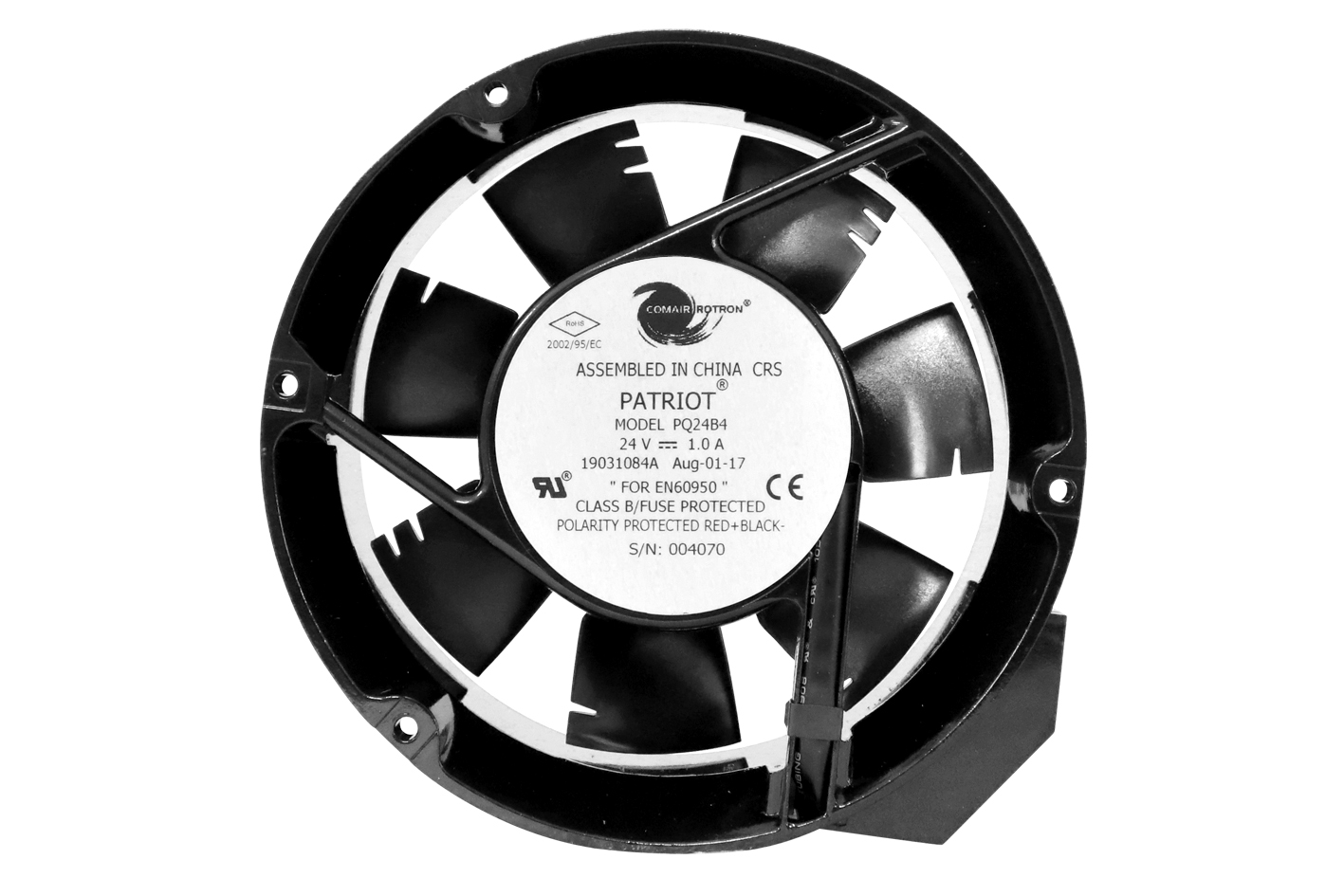DC Fans
DC Fans available from Stock
AMS Technologies’ portfolio of brushless DC fans and blowers available from stock covers nominal voltages of 12 V, 24 V and 48 V. Your system’s regulated power supply provides one of these? Then selecting the right brushless DC fan could give you the exact performance required, immune to AC input variables and variations that are always an issue with AC fans. One single product may be used to meet the demands of different applications – simply by setting the supply voltage to a value that provides the desired airflow.
Axial DC fans are available from stock with rectangular, square or round shape and dimensions ranging from 80 x 80 x 32 mm all the way to 254 x 254 x 88.9 mm. The fans’ rated airflows range from 54.4 m³/hr to 931 m³/hr, while the rated air pressures start at 57 Pa and cover a range up to 589 Pa.
Available electrical terminations include lead wires, lead wires plus tachometer output and terminals. For mounting situations requiring some distance from the base structure, AMS Technologies provides a dedicated distance frame.
Centrifugal or radial DC “blower” fans (blowers) are also available from stock, delivering higher rated pressure but less flow rate than their axial counterparts. AMS Technologies carries two sizes with dimensions of 79.8 x 79.8 x 32 mm or 120.7 x 120.7 x 31 mm. Both DC blower fan types can be ordered for 12 VDC or 24 VDC supply voltages.
Related Products
In applications where nothing but a constant airflow is required, our range of AC fans powered directly from 230 VAC mains can significantly reduce the effort for voltage conversion and control that are necessary when using DC fans and might also take load off your system’s DC power supply. In addition to our general-purpose fan portfolio, we also carry filter fans that can be used as an effective and low-cost solution for removing dissipated heat out of cabinets and enclosures.
A broad range of heat sink profiles with outstanding heat transfer performance is available from AMS Technologies, comprising extruded aluminum heat sink profiles as well as heat sinks with brazed fins or bonded fins for dimensional flexibility.
Combined with components like thermoelectric (Peltier) modules or TEC temperature controllers available from AMS Technologies, our fans and heat sinks are often designed into thermoelectric cooling solutions. Beyond these standard products, we also provide extensive development services for TEC-based solutions across a large are of applications, so get in touch with the AMS Technologies TEC experts now to discuss your project’s cooling requirements.
Definition
DC fans are supplied with direct current (DC), common nominal voltages for brushless DC fans are 12 V, 24 V and 48 V – typical supply voltages in many electronic applications. If your system provides one of these voltages, you can select a DC fan from our range that will deliver the right air flow regardless of voltage and frequency fluctuations in the mains. By varying the supply voltage, the speed and air flow of DC fans can be adjusted up and down within wide limits – so the same fan can meet the requirements of different applications. Depending on the fan design, it is possible to operate a 48 V fan within a voltage range of 12 V to 56 V, for example.
Direct Current but no Constant Current
DC fans – also with brushless motors – operate on direct current, but do not draw constant current. The fans’ peak starting current is considerably higher than the average value during operation and depends on the impedances of fan and power source. The ratio of peak starting current to continuous current can be as high as 4:1 or even 5:1, depending on the size and design of the brushless DC fan motors. However, many brushless DC fans feature additional filter capacitors to suppress electromagnetic interference (EMI). Due to their significantly higher starting torque, DC fans usually reach their full rated speed faster than AC models of the same power.
After start-up, the current fluctuates between a minimum and a maximum value during a complete rotation cycle and especially during commutation. The shape of this wave movement and the level of the ripple current can also vary greatly depending on the fan and motor design. This makes it very difficult to specify the current within narrow limits. Therefore, the limitations and headroom of the current source must be known and taken into account already in the design phase.
For brushless DC fans, the ripple current depends on the electronic circuit, the design of the motor, the operating voltage and the current level. As the motor is not a constant load, the instantaneous value of the current can vary significantly from the average value.
Axial Fan or Radial Blower?
While axial fans (airflow in parallel to the turning axis of the propeller) provide large flow rates but just a small increase in pressure, the centrifugal or radial DC “blower” fans (axial air intake, 90° offset radial air outlet) deliver more pressure but less flow rate – making a DC blower the solution of choice for higher pressure systems.
Alternative Terms: Axial DC Fan; Axial Fan; Radial DC Fan; Radial Fan; Blower Fan; DC Blower










